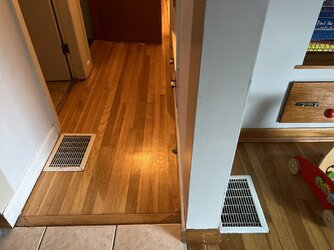Hi all,
Third season burning from my wonderwood 2941 in my basement. I’m 33. Have been running wood stoves since I was 8 in my home in Maine but all have been cast iron Jotuls.
External cinder block, chimney flu, added a New England stove SS liner 3 years ago.
Burning 2 year seasoned wood each year.
I have a question regarding the smell in my house. It’s a mix between creosote and smoke, more creosote. My side loading door has 3 holes with no plate covering them. Burns with no smell until the automatic damper closes on the front of the stove, then start to get the smell in the house.
Stove burns through wood like that’s its only job; can’t load for a long term burn or it will hit over fire. I do have a stove pipe damper which needs to be closed at 90% most of the time. Coals only last about an hour before fire dies. No smoke have ever filled the house. Chimney is clear of creosote, yet the load door tends to build some black on it. Anyone with experience with this stove and is this typical for the (not)wonderwood? Do I need to just bite the bullet and buy a real stove?
Third season burning from my wonderwood 2941 in my basement. I’m 33. Have been running wood stoves since I was 8 in my home in Maine but all have been cast iron Jotuls.
External cinder block, chimney flu, added a New England stove SS liner 3 years ago.
Burning 2 year seasoned wood each year.
I have a question regarding the smell in my house. It’s a mix between creosote and smoke, more creosote. My side loading door has 3 holes with no plate covering them. Burns with no smell until the automatic damper closes on the front of the stove, then start to get the smell in the house.
Stove burns through wood like that’s its only job; can’t load for a long term burn or it will hit over fire. I do have a stove pipe damper which needs to be closed at 90% most of the time. Coals only last about an hour before fire dies. No smoke have ever filled the house. Chimney is clear of creosote, yet the load door tends to build some black on it. Anyone with experience with this stove and is this typical for the (not)wonderwood? Do I need to just bite the bullet and buy a real stove?


